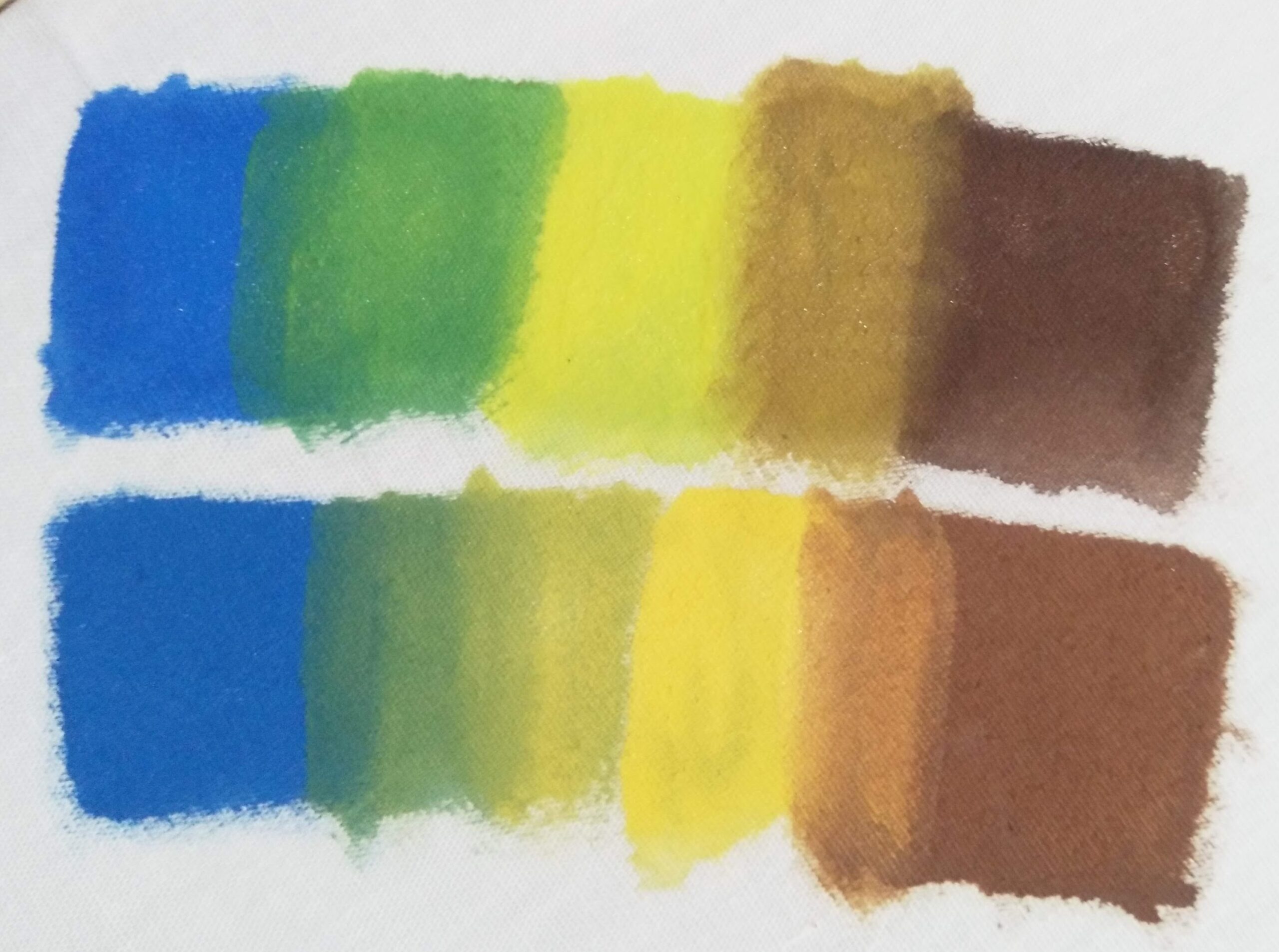Colors can make any piece of fabric beautiful. You might want to paint on a piece of fabric and may have come across acrylic paint and fabric paint. So what is the difference between acrylic paint and fabric paints?
In general fabric, paint is a painting medium specially formulated to paint on fabric. It can be washed after drying thoroughly and is generally soft on the fabric. Acrylic paint is a versatile art medium that can be used on fabric after mixing with a fabric medium.
Painting on fabric is a fun activity. When you know all the aspects of paint, it is easier to create beautiful artwork without any technical barriers.
What is the difference between fabric and acrylic paint?
The difference between acrylic and fabric paints comes with their formulations. Both acrylic paint and fabric paints use acrylic polymer binder. It is the glue that holds the paint together. Both use the same pigments in most cases.
However, when fabric paint is applied to the fabric, it bonds with the fabric permanently and feels very soft on the fabric. but when acrylic paint is applied to the fabric it feels stiffer and thick. Also, you will need to heat set acrylic paint. Some fabric paints also need to be heat set.
Fabric paints will not change even after going through frequent wash cycles. But the colors can fade after a few years. Acrylic paint itself can be cracked and peeled off with time, especially with frequent washing.
If you want to use acrylic paints on the fabric you can use it with a fabric medium. Fabric mediums help acrylic paint bond better with fabric. But it does not guarantee a soft feeling on fabric like fabric paint. One thing to note is that both acrylic paint and fabric paints take a long time to dry on fabric.
Two specific mediums help with the softness of acrylic paint on fabric. They are Liquitex Effects Fabric Medium and Golden Airbrush Medium. I only recommend using these two mediums with acrylic paint.
I have written a whole article comparing all the water-based paints to acrylic paint. You can find a detailed comparison of each water-based paint and acrylic paint including a nice summary with a handy chart.
I have tested both acrylic paint and fabric paint on fabric to see the real difference between them. Below I have recorded by results in a table. I have used regular student-grade acrylic paints and fabric paint from DecoArt called SoSoft for this experiment.
| Aspect | Acrylic paint | Fabric paint |
| Composition | Different type of acrylic binder but same pigments | Different type of acrylic binder but same pigments |
| Usage | Almost any surface | Prewashed fabrics |
| Application | Smooth | Smooth |
| Color | Best color saturation, vividness, and color mixing | Average color saturation, vividness, and color mixing |
| Permanence | Permanent after fully drying on almost any surface | Permanent on fabrics and other surfaces they can be absorbed into |
| Finishing | Stiff finishing on fabric | Very soft finishing on fabric |
| Price | 0.25 USD/oz to 9 USD/oz | 2.44 USD/oz to 7.46 USD/ oz |
Below I have described each of the aspects of these paints in more detail. It will help you to have a deeper understanding of your paints.
Composition
The composition of all paints is proprietary information of the company. Therefore they do not disclose them to the public. However, acrylic paint and fabric paints generally are made from an acrylic polymer binder, pigments, fillers, and additives.
At least this is true for DecoArt fabric paints. When I asked from DecoArt they said that their fabric paint ‘SoSoft’ is made with an acrylic binder and the same pigments are used in both fabric paints and acrylic paints.
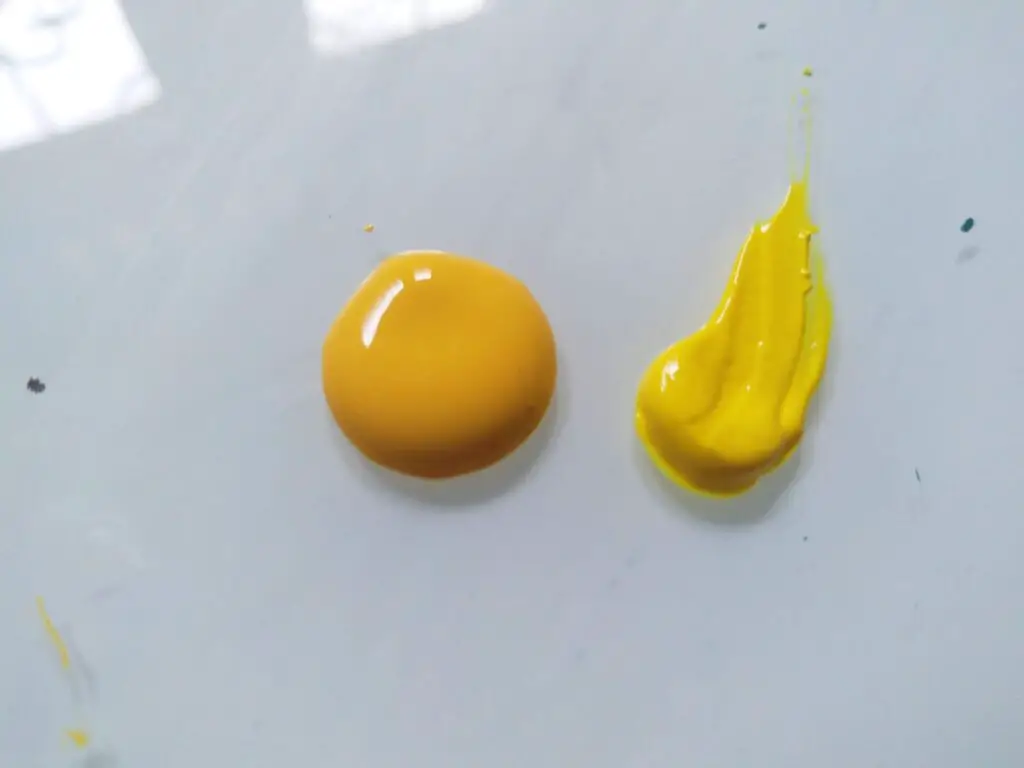
When considering the consistency the SoSoft fabric paint has a thin consistency compared to acrylic paint. in general, also fabric paint has a medium body or a thin consistency than acrylic paints.
This is because fabric paints should not feel very thick when applied to the fabric. If it is too thick the paint will harden the fabric surface. It will not feel very good. This is what happens with acrylic paint as it has a thick consistency. They harden the fabric and it doesn’t feel very good.
Where to use them?
Acrylic paints are multi-surface compatible paints. They can be painted on paper canvas plastic to metal. But even though acrylic paint sticks to fabric, it is not the best option to use on fabric because it feels hard on fabric. Acrylic paint does not stretch with the fabric, hence prone to cracking.
But if you are using acrylic paint on a piece of fabric that is for decorative purposes and which you will not be washing, then using acrylic paints will be okay. If it is on a fabric that needs frequent washing acrylic paint is not the best choice. Acrylic paint works best on canvas.
However, fabric paints are specially made to use on fabric. They are very soft on canvas and do not feel hard at all. They are flexible and can be stretched with the fabric. They can be used on a variety of prewashed fabrics like wool, knits, cotton, polyester, cotton wool, jerseys, velvet, jacquard, blended fibers, nonwovens, and even leather.
However, fabric paints are not formulated to be used on hard surfaces. If it is something that they can’t completely saturate, they may remain tacky to the touch and will pick up dust and debris.
However acrylic paint can be painted on hard surfaces. They may be completely dry within a few days or a few weeks. After that acrylic paint is permanent on surfaces like fabric, glass, metal, and plastic. Use the mediums I have mentioned above for the best result.
Can fabric paint be used on paper?
Fabric paints cannot be used on paper. It sits on top of the paper after applying and peels away when rub on it a little. This might be because fabric paint cannot penetrate paper as with fabric. The best paints for paper would be watercolors, gouache, or acrylic paint.
Application
Both fabric paint and acrylic paint applications are smooth on fabric. The fabric paint is absorbed into the fabric quickly while acrylic paint can be glided nicely on fabrics.
Acrylic paints soak the fabric they are applied to, all the way to the opposite side of the fabric. But fabric paint does not soak quite much to the other side. This will help to protect fabric paint and it may be the reason fabric paint is soft on the fabric while acrylic paint is not.
Colors/ pigments
Both acrylic and fabric paints use the same color pigment. This is what I got to know when I asked about Deco Art. SoSoft comes in 72 different colors. Acrylic paints are also available in this wide range of colors. As an example, Winsor & Newton has 88 different colors in their professional acrylic range.
Acrylic paints have different qualities from craft to the student to artists grade acrylics. Craft acrylic paints and student-grade acrylic paints are lower in quality and have fewer pigments compared to artist-grade acrylic paints. The color saturation and vibrancy are also low in low-quality acrylic paints.
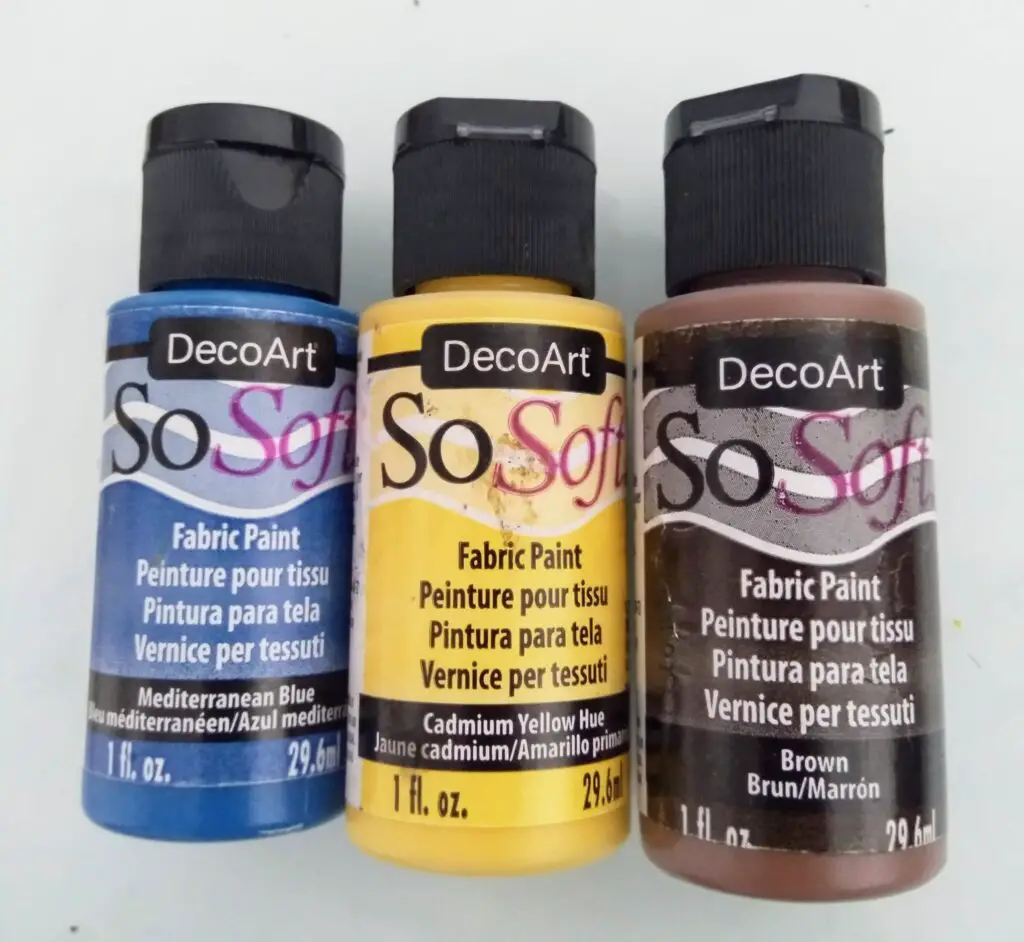
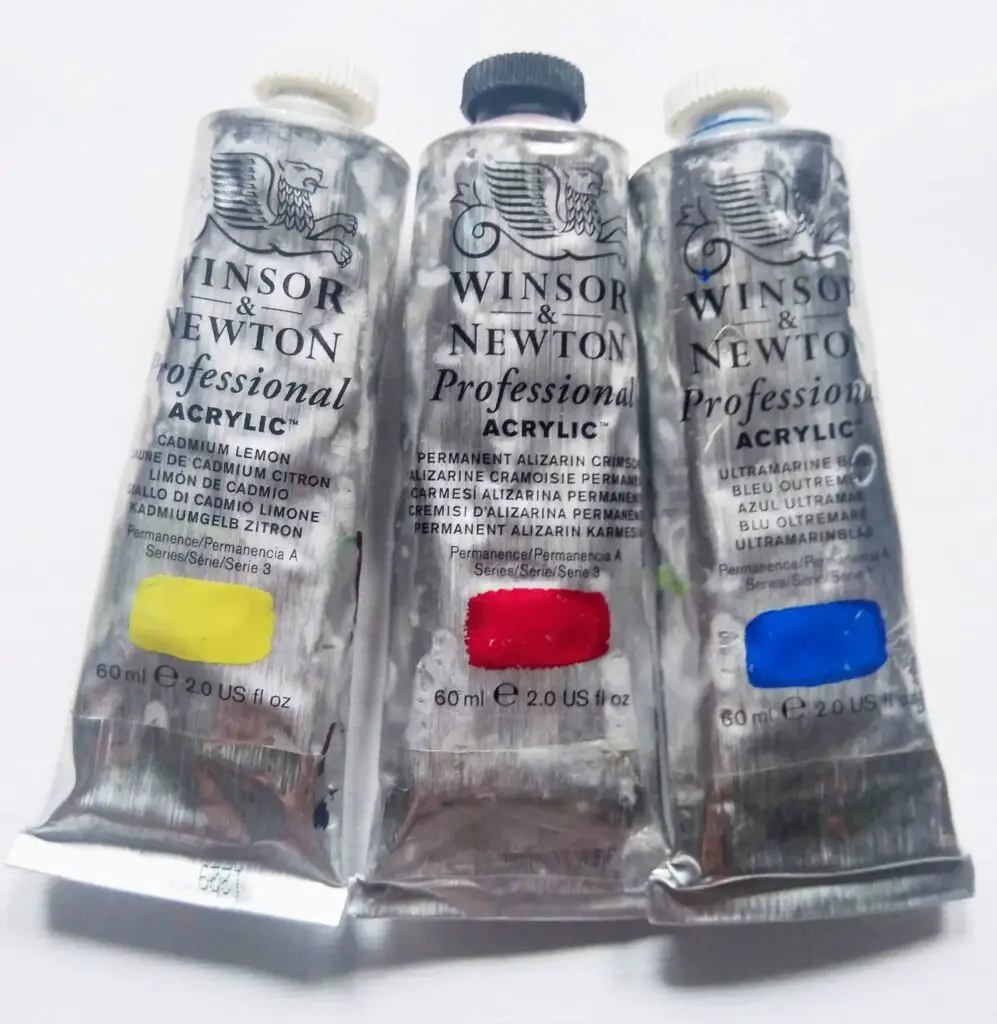
Color saturation, vividness, and color mixing…
Fabric paints do not have this kind of different quality. Also, DecoArt SoSoft fabric paint is not of the best quality. It has less color saturation and vividness. Most colors are dull. This is a common case with craft-quality paints. The coverage of SoSoft fabric paint is also low.
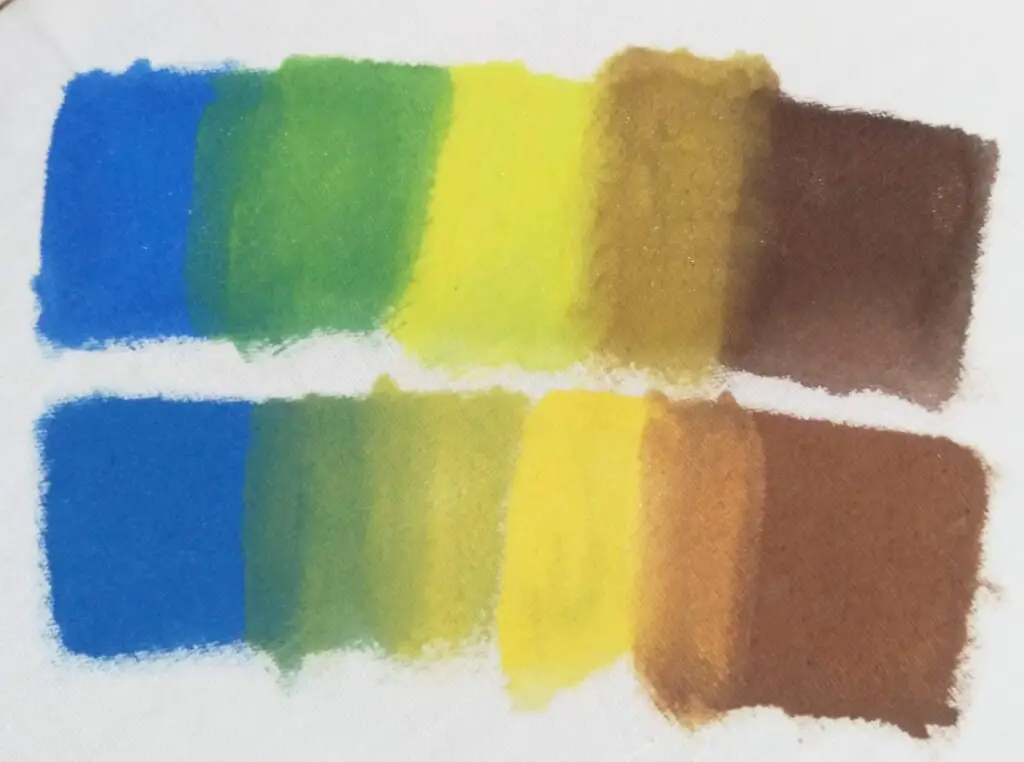
However, this can change according to the fabric paint brand you are using. If you use fabric paint like Pebeo Setacolor, you will have different results with better color saturation and coverage.
When comparing acrylic paint and fabric paints, fabric paints have low color saturation and vividness, compared to acrylic paints. Acrylic paints have the best color saturation and vividness.
Color mixing is best with acrylic paints compared to fabric paints. Fabric paints gave less saturated more muddy colors when mixed. Again this can be changed according to the brand you are using. You can see the results I got with DecoArt SoSoft fabric paints and acrylic paint.
Opacity, coverage, and paint thinning…
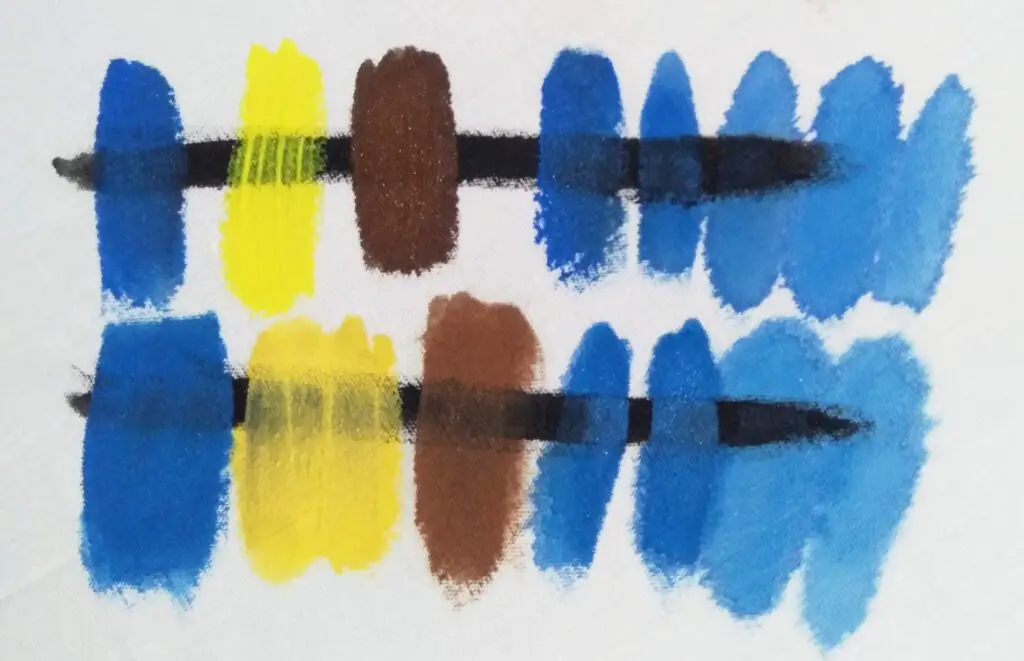
Opacity measures the transparency of a color. When opacity is high, the color is opaque when opacity is low the color is transparent. I have tested the opacity of fabric and acrylic paint on two black stripes. I have checked how much the black stripe is seen through the paint.
The opacity of both acrylic paint and fabric paint is the same on the fabric I have tested. The yellow color is usually the transparent color and it is the same for both acrylic and fabric paints. Other colors’ opacity is the same for both acrylic and fabric paint.
When a color is more opaque it can cover an area well. When a color is transparent the coverage of paint is low. Acrylic and fabric paints have similar coverage because they have similar opacity. This can be changed according to the acrylic paint quality you use. Artists grade acrylic paints usually have the best color saturation, vibrancy, and coverage.
I have also tested how acrylic paint and fabric paint thinned with more water on the fabric. Acrylic paint can be extended more with water than fabric paint. When a little water is added fabric paint is already thinned out. But as acrylic paints are thicker they can be thinned with water more.
Again this can be changed according to the fabric paint brand you are using. However, the best way to thin acrylic or fabric paint on fabric is by using a medium. I have used acrylic gloss and matte medium with acrylic paint and it gave me very clean sharp edges on very thin acrylic washes compared to just using only water.
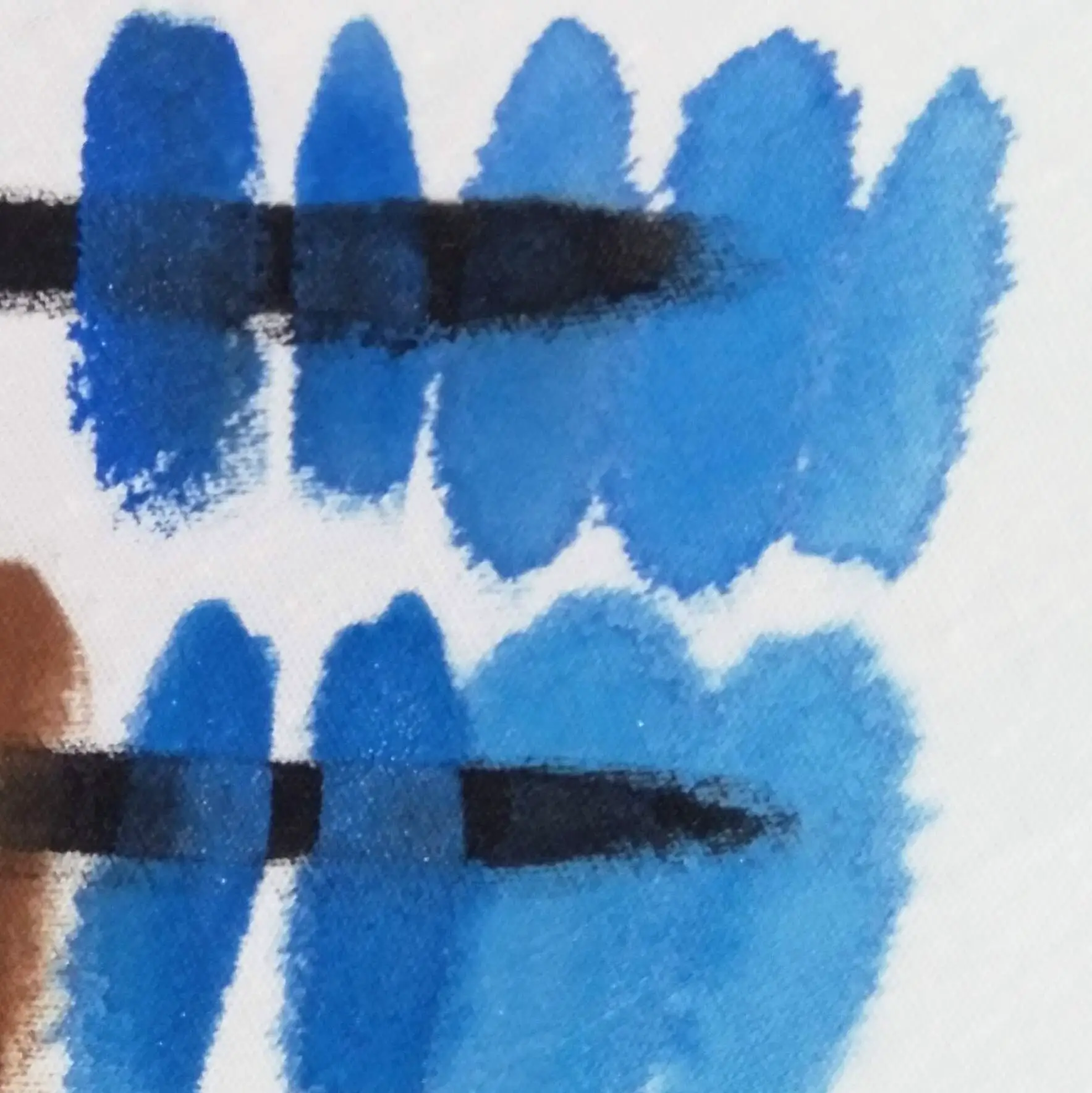
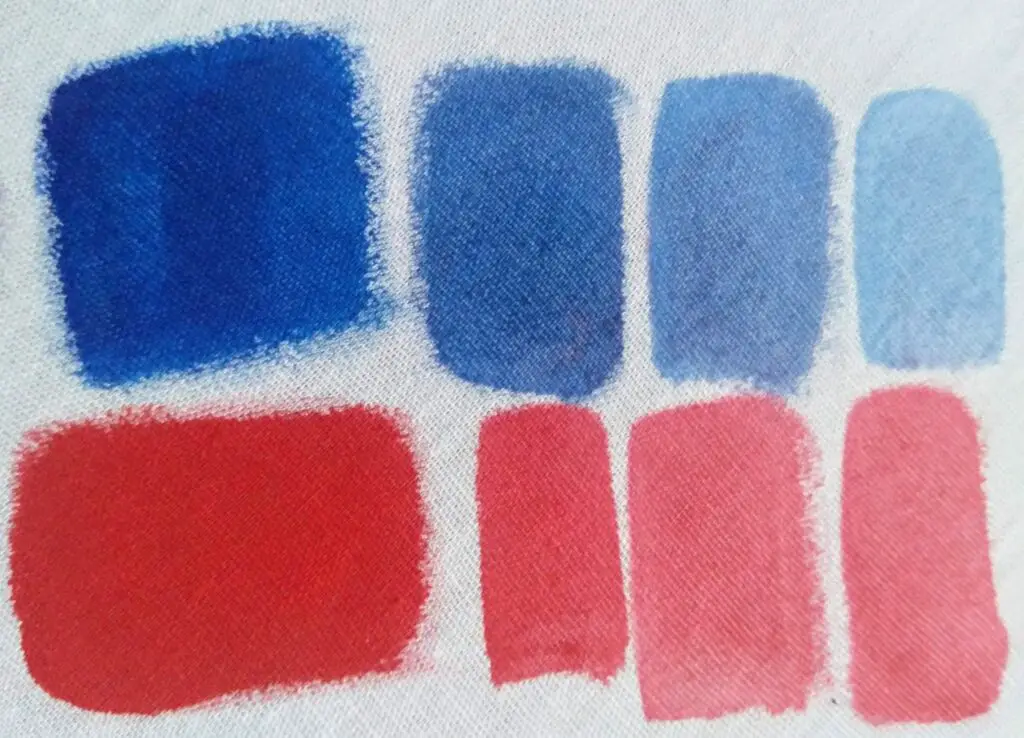
Permanence
Fabric paint is permanent on the fabric after allowing it to dry for 2 to 3 days. Some fabric paints need heat setting and some do not. Acrylic paints mixed with acrylic mediums also need to be heat set. When fabric paint is fully dry, it does not crack, peel or harden even if washed frequently.
I have some fabric-painted pieces that have not changed in color even after 5 years. That piece of cloth is not washed very frequently, but I have seen other people have fabric painted cloths over 7 years that are frequently washed. These only have very subtle color changes, maybe a little faded.
As long as acrylic paints are dry, it is very difficult for them to wash out of fabric. Over time they may slowly crack, but using fabric mediums for acrylics to make them more flexible so they wear much like screen-printed fabrics.
I have used both acrylic and fabric paint many times on t-shirts, canvas shoes, tote bags, and other surfaces with good results. They can go through a washing machine with no trouble. The two mediums I recommend using with acrylic paints are Liquitex Effects Fabric Medium and Golden Airbrush Medium.
Only the Golden Airbrush Medium is recommended to also be used as a fabric medium. Both the Liquitex and Golden Mediums I mentioned above will also soften the feel of the paint, so it’s not so stiff.
Finishing
Fabric paint gives a great finishing to the fabric. As said before it dries very soft and the paint feels almost like a part of the fabric. But acrylic paint is very stiff. This is an issue if you are using it on cloth or any other thing that has contact with your skin.
Both acrylic and fabric paint has a color shift. Meaning they dry darker than their wet color. So be mindful about this when you are mixing and applying colors.
Is fabric paint waterproof?
Fabric paint is permanent and waterproof after drying. It does not crack, peel or harden upon drying and washing. When washing a fabric painted piece use only soap. Drying on low heat or hanging to dry, not dry cleaning is recommended by most manufacturers.
As the name suggests SoSoft fabric paint is very soft after drying. It almost feels like the fabric itself and not paint. It is also important to mention the color shift.
Are acrylic paints permanent on fabric?
Acrylic paints are permanent on fabric but some parts of the painting can be washed off. Use fabric medium to improve the bond to the fabric and help prevent cracking, peeling, and fading. However acrylic paint will feel harder and not soft like fabric paint.
You can use acrylic paint on the fabric and wash it. But some parts of the paint can peel away. As said before the best option if you want to use acrylic paint on the fabric would be to use a fabric medium. Use the fabric mediums I mentioned above for better results.
Price
Acrylic paint prices range from 0.25 to 2.95 USD / fl oz for craft or student-grade acrylic paint. Artist-grade acrylic paint price ranges from 1.75 to 9 USD/fl oz. If you would like to know an in-depth price breakdown of acrylic paint, you can read my article ‘Are acrylic paints expensive? (a price breakdown)‘
Fabric paints are also available at different price points. Let’s break down the prices of some popular fabric paint brands in the following table.
| Fabric paint brand | Quantity | Price per 1 fl oz (USD) |
| Createx Acrylic Paints | 473 ml (6 oz) | 2.44 |
| Jacquard Textile Colors | 66.5 ml (2.25 oz) | 1.7 |
| Pebeo Setacolor Fabric Paints | 45 ml (1.5 oz) | 4.43 |
| Marabu Textil Plus Fabric Paint | 50 ml (1.7 oz) | 3.52 |
| DecoArt SoSoft | 29.6 ml (1oz) | 7.46 |
As you can see fabric paints price rages from 2.44 USD/oz to 7.46 USD/ oz. So in general fabric paints are a little more expensive than acrylic paints. However, it is the best choice for the fabric work that you make or use every day. It will give the best finishing to your work and durability even with frequent washing.
What paint to use on fabric?
In general, both fabric and acrylic paints can be used on fabric. Fabric paints are specially formulated to be used on fabric. They are permanent and soft on fabric. Acrylic paint itself is permanent on fabric but can crack over time if not used with a fabric medium.
You can use fabric paint on the fabric itself. It leaves a soft finishing on the fabric. If that is not an option the next best option would be using acrylic paint with fabric mediums for acrylics to make them more flexible so they wear much like screen-printed fabrics.
Some of the best acrylic fabric mediums you can use are Liquitex Effects Fabric Medium and Golden Airbrush Mediums. These will also soften acrylic paint very much rather than using acrylic paints by themselves. You will not get better results with other acrylic mediums like matte or gloss mediums. They will not make acrylic paints softer.
Can you use acrylic paint instead of fabric paint?
Acrylic paint can be used instead of fabric paint on a fabric that is not used every day or that is washed frequently. But using acrylic paint with a fabric medium creates washable, permanent paint for fabric. Otherwise, fabric paint is the best choice for fabrics.
However acrylic paint is a very versatile art medium. It can be used on almost any surface from paper to canvas to plastic to metal. But I do not recommend it using fabric unless used on a decorative piece.
If you are using fabric paints with fabric medium use two parts of paint and one part of the medium. Always refer to the manufacturer’s guidelines when mixing paint and medium.
If you are interested to know what acrylic paint does not stick to read the following article I have written: What will acrylic paint not stick to (experiment results)
How to soften acrylic paint on fabric?
Using acrylic mediums such as Liquitex Effects Fabric Medium and Golden Airbrush Mediums are the best ways to soften acrylic paint on fabric. They give flexibility and reduce the stiffness of acrylic paint on fabric so that they wear like screen-printed fabrics.
How to turn acrylic paint into fabric paint without a medium?
In general acrylic paint cannot be turned into fabric paint without a medium. Acrylic paint without a medium is just acrylic paint. However, you can thin acrylic paint too much and use it like watercolor on fabric. These very thinned acrylic paints are soft and like fabric paint.
However, very thinned acrylic paint seeps through the fabric. You can use a paper towel below the fabric to absorb excess water if you want to minimize this effect. Another option is using acrylic medium to thin acrylic paint instead of water. you can get clean edges that way.
Conclusion
Both acrylic paint and fabric paint can be used on fabric. The best option for fabric is fabric paint. Acrylic paint is a versatile art medium that can be used on almost any surface. For best results use acrylic paint with mediums I have mentioned if using on fabric. Fabric and acrylic paints can be frequently washed but permanent on fabric.

